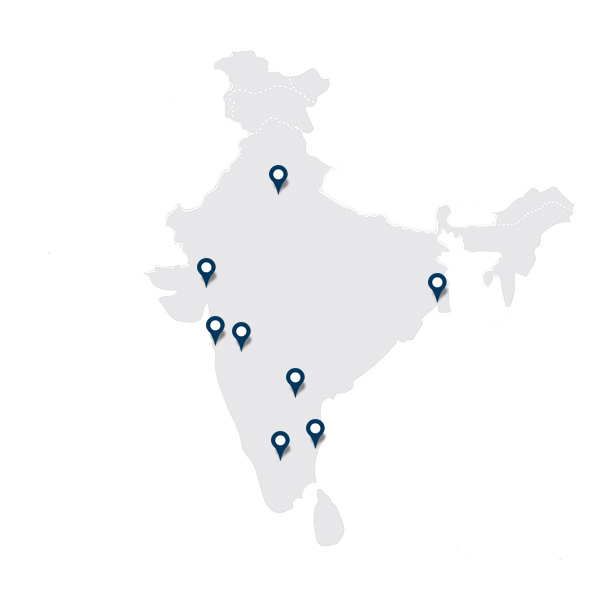Introduction
For Indian students with dreams of studying at top global universities, the journey is both exhilarating and daunting. The thought of walking through the halls of institutions that have shaped world leaders, innovators and thinkers can be inspiring, but the path to securing a place there is rarely straightforward. With thousands of Indian students applying each year, standing out requires more than just impressive grades—it demands a thoughtful approach, self-awareness and a clear understanding of what these universities truly seek in their applicants. The process of how to get admission in the top universities of the world is complex, involving careful planning, research and a willingness to step outside comfort zones. Whether it’s understanding the nuances of international applications, preparing for entrance exams, or crafting a compelling personal narrative, every detail matters. This guide aims to demystify the process, offering practical advice and insider perspectives to help Indian students turn their ambitions into reality.
With a sense of purpose and ambition, the next step is to identify which global university and undergraduate programme best align with your goals and interests. This decision is more than just a checklist of rankings—it’s about finding a place where you can thrive academically and personally. As you consider how to get admission in the top universities of the world, keep in mind that the right choice will set the foundation for your future journey.
Selecting the Right University and Undergraduate Degree
Key Factors to Consider
Academic Fit and Course Offerings
Start by identifying your interests and strengths. What subjects excite you? Which fields offer the best prospects for your future career? Look for universities that provide a curriculum aligned with your passions and ambitions. Investigate if they offer specialisations, research opportunities, or interdisciplinary programmes that could broaden your horizons.
Accreditation and Reputation
Ensure the university is accredited and recognised globally. This guarantees that your degree will be valued by employers and other institutions. While reputation matters, don’t let it overshadow other important aspects of your choice.
Faculty and Research Opportunities
The quality of faculty and their research output can greatly influence your learning experience. Explore the profiles of professors in your department and check if they are involved in exciting research or industry collaborations.
Location and Campus Life
Consider the city and country where the university is located. Think about the climate, cultural environment, safety and opportunities for internships or networking. The campus vibe and extracurricular activities can also make a big difference in your overall experience.
Support for International Students
Look for universities with strong support systems for international students, including visa guidance, accommodation, language support and career services.
Cost and Scholarships
Tuition fees and living costs vary widely. Research available scholarships, grants and financial aid options to make your dream of studying abroad more accessible.
Career Prospects
Investigate the university’s track record for graduate employment, internships and industry partnerships. This can be a deciding factor for your long-term success.
When reflecting on how to get admission in the top universities of the world, remember that the best choice is one that fits your unique needs and goals. Take the time to visit campuses (virtually or in person), speak to current students and seek advice from mentors or consultants. The right university will not only challenge you academically but also help you grow as a person.
While rankings can be a useful starting point, they only tell part of the story. To truly appreciate what a university offers, it helps to delve deeper into how these rankings are created and what they mean for your individual journey. This deeper look will help you make more informed choices as you move ahead.
Understanding University Rankings
What Rankings Measure
- Teaching and Learning Environment: Rankings often assess the quality of teaching, student support and resources available to learners.
- Research Excellence: The volume, influence and reputation of research conducted at a university are key factors.
- Internationalisation: The proportion of international students and staff, as well as global collaborations, are increasingly important indicators.
- Employer Reputation: How well graduates are regarded by employers can influence a university’s standing.
- Student-to-Faculty Ratio: This reflects the level of individual attention and support students might expect.
Why Rankings Matter
Rankings can help you compare institutions on factors that matter most to your ambitions. They act as a filter, highlighting universities with strong global brands, robust research networks and vibrant international communities. For many Indian students, a high ranking can signal a university’s ability to offer a transformative educational experience and open doors to global opportunities. However, rankings are not the only measure of quality. They do not always capture the nuances of student life, campus culture, or specific programme strengths. Some universities might excel in certain fields but not appear at the top of general league tables. That’s why, when thinking about how to get admission in the top universities of the world, it’s wise to use rankings as a starting point rather than the final word. Keep track of the following lesser-known, hidden insights to gain a significant advantage over your peers and stay ahead in today’s rapidly evolving admissions landscape :- International Student Ratio: A high score here means a more diverse and globally connected community, which can enrich your experience.
- Research Impact: Universities with strong research profiles often have better resources and networking opportunities for undergraduates.
- Dynamic Rankings: Rankings change yearly, so always check the latest data and methodology before making decisions.
Application Process for Top Universities
1. Research and Shortlist Universities
Start by identifying universities that match your academic interests, career goals and personal preferences. Consider factors like course content, faculty expertise, campus culture and support for international students. Make a shortlist of 6–10 institutions to maximise your chances and keep your options open.2. Understand Entry Requirements
Each university has specific entry criteria, including academic qualifications, standardised test scores (such as SAT, ACT, or subject tests) and English language proficiency (IELTS, TOEFL, etc.). Review these requirements early and ensure you have enough time to prepare and sit the necessary exams.3. Prepare Your Application Documents
Gather all required documents, which typically include:- Academic transcripts and certificates
- Standardised test scores
- Proof of English language proficiency
- Letters of recommendation from teachers or mentors
- A well-crafted personal statement or motivation letter
- CV or resume (if required)
4. Write a Compelling Personal Statement
Your personal statement is your chance to stand out. Be honest, reflective and specific about your experiences, aspirations and why you want to study at that particular university. Tailor each statement to the institution and course you are applying for.5. Submit Your Application
Most top universities allow online applications through their websites or centralised platforms like UCAS (for the UK). Pay attention to deadlines and ensure you submit all documents well in advance. Double-check each application for accuracy and completeness.6. Prepare for Interviews and Additional Assessments
Some universities may require interviews, portfolios, or supplementary tests. Practise common interview questions and prepare to discuss your academic background and motivation.7. Apply for Scholarships and Financial Aid
Look for scholarship opportunities early and submit any additional applications required. Some scholarships have separate deadlines, so plan accordingly.8. Accept Your Offer and Prepare for Visa
Once you receive an offer, respond promptly and start preparing your student visa application. Gather all necessary documents, including proof of funds and accommodation details. Many Indian students underestimate the importance of demonstrating genuine interest in their chosen university. Attending virtual open days or connecting with current students can give you valuable insights and help you craft a more authentic application. Once you have a clear plan for submitting your applications, it’s time to focus on preparing for entrance exams and interviews. These elements are crucial in showing universities why you are the right fit for their community and how you can contribute as a student.Preparing for TOEFL, ACT and SAT Exams
TOEFL: Mastering English Proficiency
- Know the Format: The TOEFL iBT test assesses reading, listening, speaking and writing skills in an academic context. Familiarise yourself with the question types and timing for each section.
- Practice Authentically: Use official ETS materials and take full-length practice tests under real exam conditions. This builds stamina and helps you identify weak spots.
- Build Vocabulary and Reading Habits: Read academic texts, newspapers and journals in English. Focus on learning new words in context and note down unfamiliar terms for review.
- Keep an Error Log: Track mistakes from practice tests to target areas needing improvement. Regular review turns weaknesses into strengths.
- Prepare for Speaking and Writing: Record yourself answering sample questions and seek feedback. Write essays on diverse topics to improve clarity and coherence.
SAT and ACT: Showcasing Academic Readiness
- Understand the Structure: The SAT focuses on evidence-based reading, writing and maths, while the ACT includes a science section. Both require strong fundamentals and quick thinking.
- Create a Study Schedule: Break down the syllabus into manageable chunks. Allocate specific days for each subject and stick to a routine, even if you have limited time.
- Use Official Resources: Practice with official SAT and ACT materials. Full-length tests simulate real exam conditions and help you manage time effectively.
- Review Mistakes Thoroughly: After each practice test, analyse errors to understand patterns and avoid repeating them. This step is often overlooked but is crucial for progress.
- Build Vocabulary and Math Skills: For the reading and writing sections, expand your vocabulary with flashcards or apps. For maths, review key concepts and practice problem-solving under time pressure.
- Balancing School and Test Prep: Many Indian students juggle school exams with test prep. Short, focused study sessions during the week and longer practice on weekends can help maintain a healthy balance.
- Local Support Networks: Joining study groups or online forums with peers preparing for the same tests can provide motivation and new strategies.
Financing Undergraduate Studies
Scholarships and Grants
- University-Specific Scholarships: Many top universities offer merit-based or need-based scholarships for international students. For example, the Cornell University Tata Scholarship covers full tuition for Indian undergraduates, supporting up to 20 students each year.
- Government and Private Scholarships: The Indian government, through schemes like the National Overseas Scholarship and private foundations such as the Inlaks Shivdasani Foundation, provide financial support for students pursuing undergraduate studies abroad.
- Country-Specific Scholarships: Countries like the UK, USA and Australia have dedicated scholarships for Indian students, including the Oxford and Cambridge Society of India (OCSI) Scholarships and the Wien International Scholarship Program.
Education Loans
- Indian Banks and NBFCs: Most major Indian banks offer education loans with favourable terms for international studies. These loans typically cover tuition, living expenses and sometimes even travel costs.
- Specialised Loan Schemes: The JN Tata Endowment offers loan scholarships for postgraduate and sometimes undergraduate studies, with additional benefits like travel grants and gift awards.
Part-Time Work and Internships
- Work While Studying: Many countries allow international students to work part-time during their studies, helping to offset living expenses and gain valuable work experience.
- Internships and Co-op Programmes: Some universities offer paid internships or cooperative education programmes, which can significantly reduce financial pressure while building your resume.
Insights into University Admissions
Academic Performance and Subject Requirements
- Grades and Streams: Most top global universities expect Indian students to have strong grades in their Class 12 board exams. For example, UK universities typically require between 75% and 90% depending on the course and institution. In the US, a minimum of 65% is required for humanities and 70–80% for science or commerce streams, but top-tier universities often seek much higher scores.
- Subject Relevance: Some programmes require students to have studied specific subjects in school. For instance, engineering courses may require physics, chemistry and mathematics at the higher secondary level.
Standardised Tests and English Proficiency
- SAT/ACT: US universities may require SAT or ACT scores, though many are now test-optional. UK universities rarely require these for undergraduate admissions.
- English Language Tests: All top universities require proof of English proficiency, usually through TOEFL, IELTS, or PTE scores.
- Additional Assessments: Certain courses, such as arts, may require portfolios, interviews, or supplementary tests.
Personal Statements and Extracurricular Activities
- Personal Statement: This is a crucial component where students can showcase their interests, goals and unique experiences. It is often the deciding factor for admissions committees.
- Extracurriculars: Leadership roles, community service and participation in competitions can set applicants apart from their peers.
Exploring Graduate Degrees and Programs Worldwide
For Indian students considering how to get admission in the top universities of the world, pursuing graduate degrees in the UK, Ireland and Dubai offers a blend of academic excellence, career prospects and cultural familiarity.
United Kingdom
The UK remains a preferred destination due to its wide range of one- or two-year master’s programmes. Popular courses include MSc in Computer Science, MA in Creative Writing and LLM for law graduates. Leading universities such as the University of Oxford, University of Cambridge, Imperial College London and London School of Economics offer specialised programmes aligned with global industry demands. These institutions also provide strong research opportunities and extensive alumni networks.
Ireland
Ireland’s universities, including Trinity College Dublin and University College Dublin, are gaining recognition for their innovative research and personalised learning environments. Graduate programmes here cover fields like business, engineering, law and biomedical sciences, with competitive tuition fees and vibrant campus life.
Dubai
Dubai hosts branches of renowned universities such as Middlesex University Dubai, University of Wollongong in Dubai and the British University in Dubai. These institutions offer UK-style education with flexible study options and strong industry connections, making them attractive for Indian students seeking international exposure without relocating far from home.
Choosing a graduate programme should consider not only university prestige but also course content, faculty expertise and opportunities for internships or work placements. This strategic approach enhances both admission chances and career outcomes.
Conclusion
Embarking on the journey of how to get admission in the top universities of the world is a transformative experience—one where each decision, from selecting the right program to perfecting your application, shapes your academic and professional future. Though the process may seem daunting, strategic preparation, well-researched choices and unwavering dedication can make your dream of studying at an elite global institution a reality.
At Fateh Education, we specialise in the intricacies of international admissions, particularly the unique hurdles Indian students encounter. Our personalised mentorship ensures you build standout applications, identify the best-matched universities and win valuable scholarship opportunities. Your future deserves a well-guided approach—let us help you turn your aspirations into achievements.
Begin your journey now. Connect with Fateh Education today and let our expertise simplify the complexities of global admissions, giving you the confidence and direction you need. Your path to a world-class education begins here.
FAQs
Yes, numerous scholarships are available for Indian students, including merit-based, need-based and subject-specific awards. Prestigious scholarships like the Tata Scholarship (Cornell), Chevening and Erasmus Mundus support tuition and living costs. Early research and timely applications are key to securing these opportunities.
Extracurriculars are vital as they showcase leadership, creativity and personal growth beyond academics. Indian students with strong involvement in sports, arts, volunteering, or clubs stand out, demonstrating qualities that top universities highly value.
Absolutely. Recommendation letters from Indian teachers provide personalised insights into a student's abilities and character, often tipping the scales when academic records are comparable. Strong, detailed endorsements can significantly strengthen an application. .
Common errors include late starts, weak personal statements, incomplete documents, neglecting English tests and overlooking scholarships. Avoiding these by planning early, tailoring applications and thorough preparation greatly improves admission chances.


